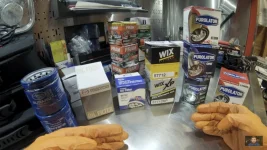I just use the Subaru blue filter from the dealer, and call it a night. Wix has great filters for the most part, but I keep oil changes to factory recommended intervals, or a bit earlier.
For my 2018 Forester, they say 6000 mile oil and filter changes. I did push one to 8000 miles and sent a sample to Blackstone. They said it looked good, try 10,000 miles next time.
Retired now, so drive little to get it fully warmed up. More $ on hand too, little fuel expense and taking in more $ each month, than I was working.

I might even back down to 4000 mile changes, using synthetic oil. Filters and oil are cheap. Timing chains and engines are expensive.
I can afford excessive oil changes. Plus my local shop gives me a 10% senior citizen discount! Gets me in any day I want, on my time frame. Lets me bring my oil and filter of choice. Like $30 out the door for an oil change. Spent lot's of $ there over the years, so we have a great working relationship. He is FAIR and HONEST! Never whined once about a bill.
I always flip him an extra $20, and say buy some donuts for the guys tomorrow AM. We treat each other right.

